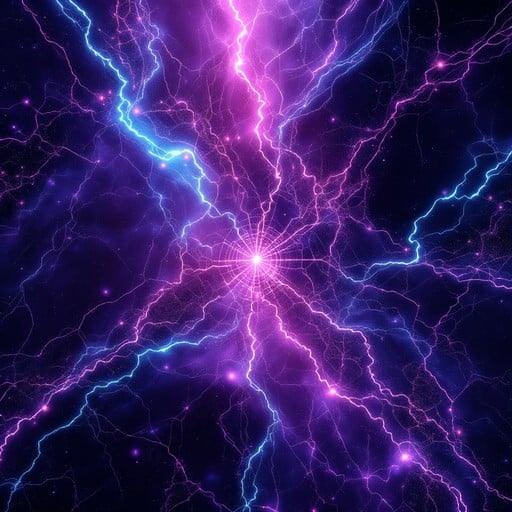
The night sky is often a canvas for mesmerizing displays of natural phenomena, but few are as captivating as green and purple lightning. This rare spectacle paints the heavens with vibrant hues, creating an unforgettable visual experience. While typical lightning appears white or yellow, these unusual bolts stand out due to their unique color palette, leaving observers in awe.
This article delves into the science behind green and purple lightning, exploring the atmospheric conditions and chemical compositions that contribute to these vivid displays. We’ll also discuss how to observe this rare phenomenon and what makes it such a captivating sight.
Green and Purple Lightning Explained
Green and purple lightning are not distinct types of lightning but rather variations in color caused by specific atmospheric conditions and the interaction of light with different gases. These unusual hues occur during thunderstorms when electrical discharges interact with certain elements present in the air. While white or yellow lightning is the most common, these rarer colors result from a complex interplay of factors that influence the way light is emitted.
The intensity and duration of green and purple lightning can vary significantly. Some bolts may flash briefly, while others linger for several seconds. The color itself can also shift during a single discharge, transitioning from green to purple or vice versa. This dynamic nature adds to the intrigue and visual spectacle of these rare events.
Atmospheric Conditions for Vivid Hues
The atmosphere plays a crucial role in determining the color of lightning. Specific atmospheric conditions influence the presence of certain gases and particles that interact with electrical discharges, leading to the emission of different wavelengths of light.
For instance, green lightning is often associated with high concentrations of oxygen and nitrogen in the air. When these gases are excited by an electrical discharge, they emit green light. Conversely, purple lightning may occur when there are higher levels of water vapor or other trace elements present in the atmosphere. These substances can absorb and re-emit light at different wavelengths, resulting in a purple hue.
Chemical Compositions and Light Emission
The chemical composition of the air directly influences the color of lightning. Different gases and particles emit light at specific wavelengths when excited by an electrical discharge. This phenomenon is known as fluorescence or phosphorescence.
For example, oxygen molecules tend to emit green light when energized, while nitrogen molecules can produce blue or violet hues. The presence of water vapor can also contribute to the emission of red or orange light. The precise combination of gases and their concentrations in the atmosphere determine the final color of the lightning bolt.
Unforgettable Visual Experience
Witnessing green and purple lightning is a truly unforgettable experience. The vibrant colors against the dark night sky create a breathtaking spectacle that leaves observers in awe. The rarity of these events adds to their allure, making them even more special for those fortunate enough to witness them.
Observing Green and Purple Lightning
Observing green and purple lightning requires patience and a bit of luck. These rare occurrences are often associated with severe thunderstorms, so it’s important to prioritize safety during any storm watching activity. Seek shelter indoors or in a hard-top vehicle if thunder roars.
When observing lightning, remember to maintain a safe distance from trees, water, and power lines. Avoid open fields and elevated areas where you may be more vulnerable to strikes.
Conclusion
Green and purple lightning are captivating natural phenomena that showcase the beauty and complexity of our atmosphere. These rare displays result from a unique interplay of atmospheric conditions, chemical compositions, and electrical discharges. While observing these events requires patience and safety precautions, the unforgettable visual experience makes it a worthwhile endeavor for those who seek to witness nature’s most spectacular light shows.
